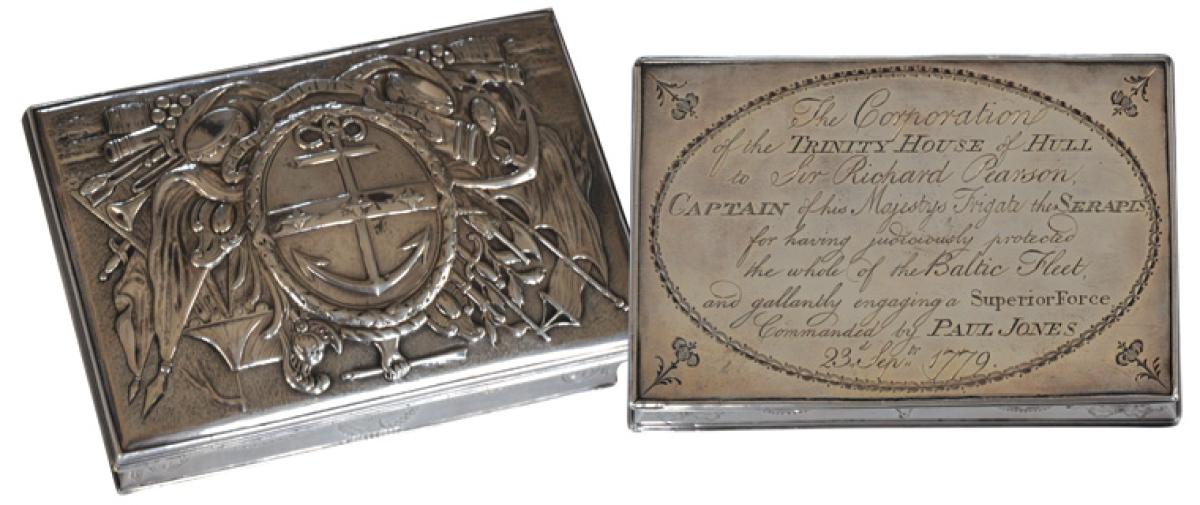Sometimes, even in defeat there is a modicum of victory, with the sting of loss ameliorated by a main mission nonetheless achieved. And sometimes, it’s not just to the victor that go the spoils—if spoils might happen to include a precious silver box ornately and elaborately engraved. This shining specimen, from the collection of a longtime U.S. Naval Institute member, offers a glimpse at the flipside of one of American history’s most celebrated sea fights—a certain little disagreement where a certain icon-in-the-making named John Paul Jones defiantly declared he’d not yet begun to fight.
The 23 September 1779 Battle of Flamborough Head etched Jones’ name forever into U.S. naval legendry, but his vanquished adversary—Richard Pearson, captain of HMS Serapis—actually didn’t fare so badly in the aftermath himself, as he could take solace in the realization that (a) yeah, he had to surrender the Serapis to Jones, but Jones’ own battle-ravaged Bonhomme Richard was bubbling down into the briny, and (b) Pearson had succeeded, after all, in protecting the Baltic convoy he was striving to shield from Jones’ squadron. On this side of the pond, Jones got all the glory, but in Merrie Olde England they feted Pearson with great aplomb: Fame, knighthood, and a flood of gifts from a grateful populace all came his way.
Just such a present was this silver box, which bears the inscription, “The Corporation of the TRINITY HOUSE of HULL to Sir Richard Pearson, CAPTAIN of his Majesty’s Frigate the SERAPIS for having judiciously protected the whole of the Baltic Fleet, and gallantly engaging a Superior Force Commanded by PAUL JONES 23d Septr 1779.” As the story goes, when later asked what he thought about the captain he’d bested being showered with acclaim and granted a knighthood, Jones retorted, “I’d like to meet him on the high seas again—I’ll make him a lord!”
Know of an unusual naval artifact? Contact us at articlesubmissions@usni.org.



